
Host is localhost Log in | Basket Empty
Host is localhost Log in | Basket Empty
View the full set in the catalogue.
See the complete list of articles.
To visit other parts of the site, click on the title or other links above.
by Roman Scheibert
(translated from German by Google Translate, with some editing by Andy Macdonald)
As an example of the fascination of the East China Liberated Area, lets consider the regular stamp showing Zhu De, issued in the liberated areas of Shandong (often referred to as Shantung when writing about this period, using the most common tranliteration of the time). It was issued at some time in 1946, but the exact date of issue is not known. The stamps reflect the difficult conditions at that time, with a very rough printed image.
The stamp was issued in two very different main types:
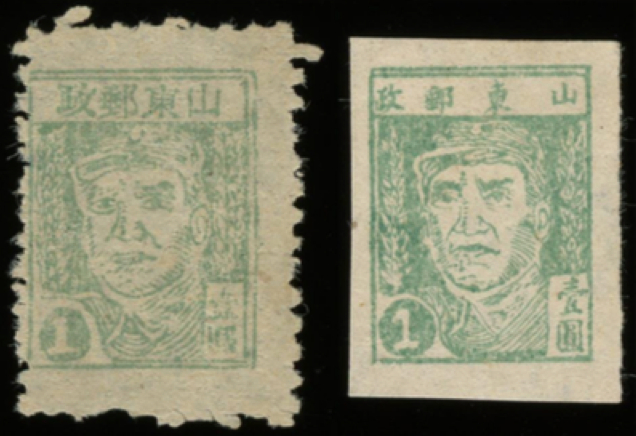
On the left is the perforated edition with the inscription above ("山東郵政", Shantung Postal Service) in the so-called song style and on the right the imperforated edition with the inscription above in the so-called regular script.
In Yang’s catalogue, they are listed as EC80 and EC81. The former is very rare. Stanley Gibbons listing of the two stamps seems to change in each new edition of their China catalogue, but the latest 2018 12th Edition lists them both as perforated, so they still haven’t got them right. Unlisted in Michel or Scott, neither of which are much good for Liberated Areas, of course.
There are six different types of the two stamps, but here I only want to deal specifically with the imperforated version on the right, for which it is easier to find examples.
The Yang catalogue distinguishes only two "main types" by the upper frame (single or double). On closer inspection, however, six types are distinguished, sometimes called:
However, we will use the designation Type 1 to Type 6, as shown in the illustrations below.
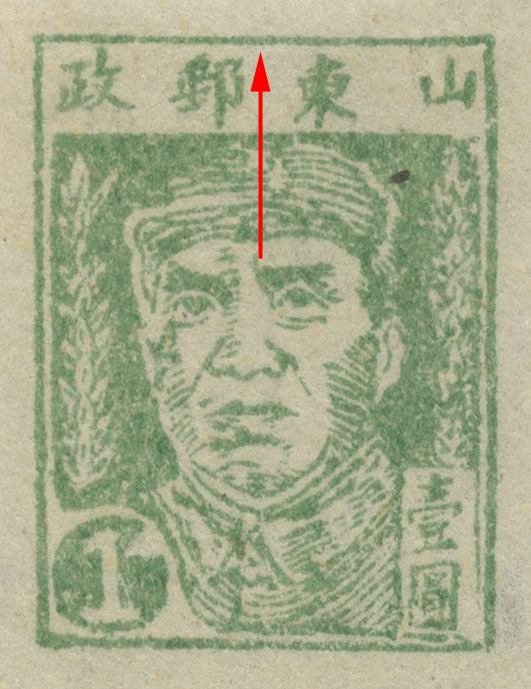
|
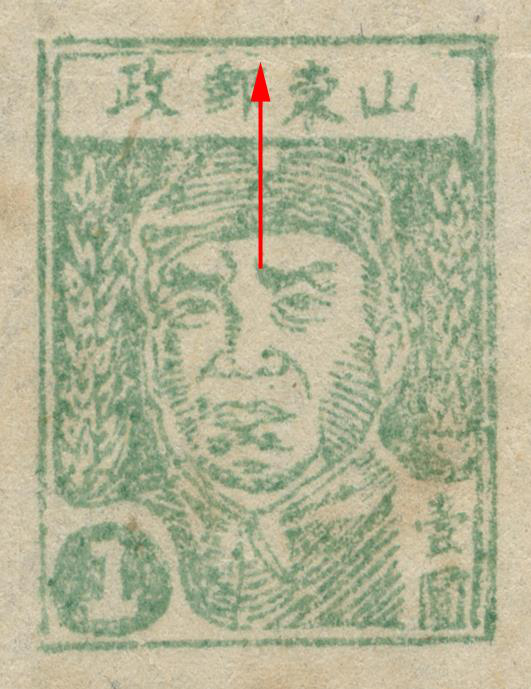
|
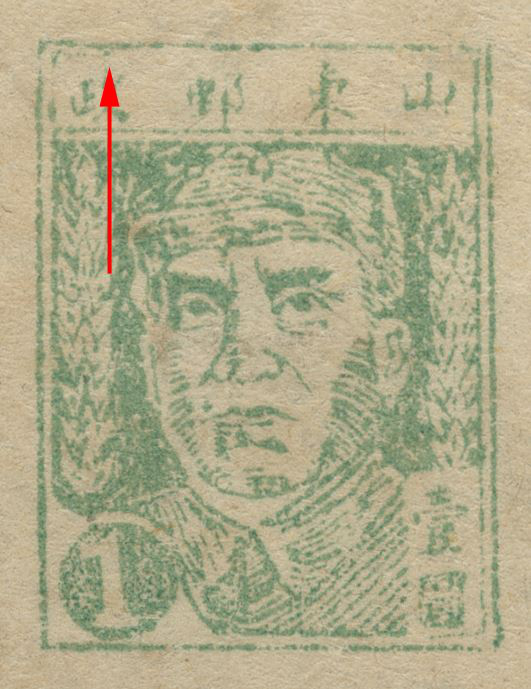
|
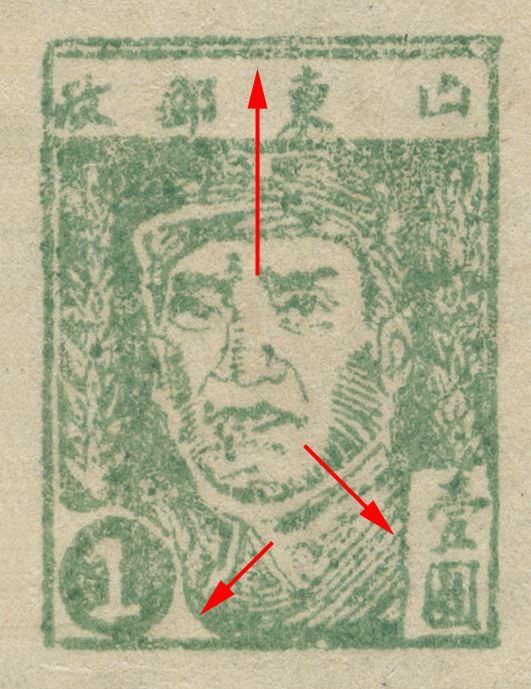
|
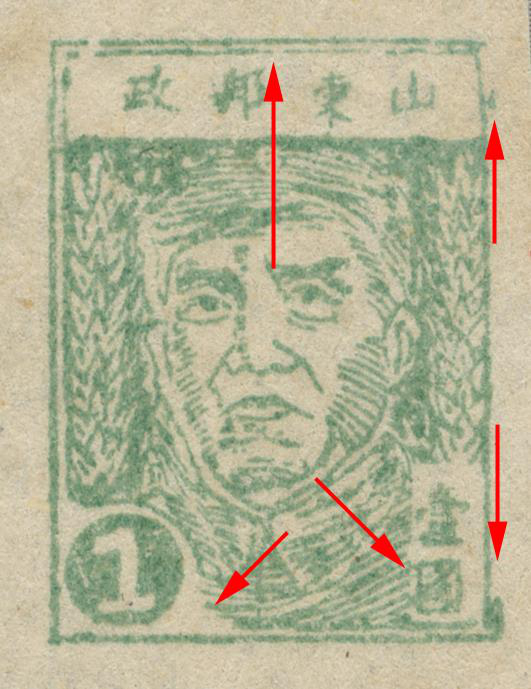
|
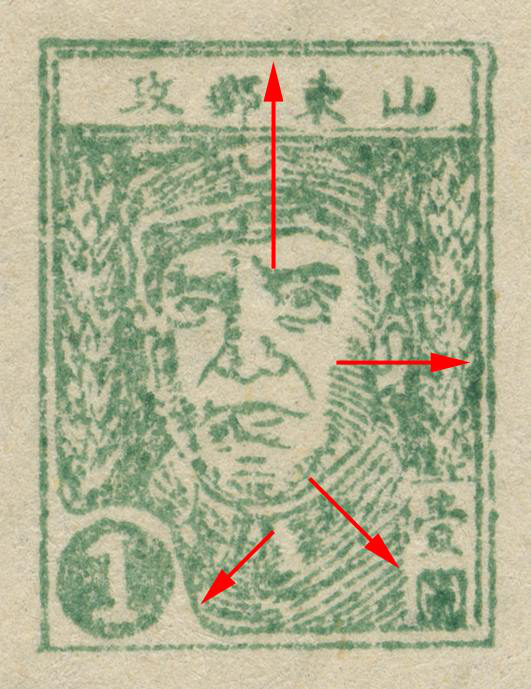
|
The arrows, in the illustrations on the previous page, indicate the decisive differentiation criteria. Other features worth mentioning are added below in brackets:
Type 1: only one frame line above (lower inner frame line unbroken)
Type 2: double frame; the inner frame at the top interrupted in the middle (lower inner frame line missing left of the 壹圓 characters; also the characters at the top, 山東郵政, are more closely set)
Type 3: double frame; the inner frame at the top interrupted on the left (lower inner frame line also missing left of the 壹圓 characters; the characters at the top, 山東郵政, are more widely set than type 2)
Type 4: double frame; at the bottom, the picture joins the lower frame line (there is a frame line to the left of the 壹圓 characters; single frame line at right)
Type 5: double frame, bottom of the picture without frame line (right outer frame line mostly missing; also the characters at the top, 山東郵政, are more closely set)
Type 6: double frame (intact top & right), lower inner frame line intact on the left, missing at left of the 壹圓 characters (the characters at the top, 山東郵政, are more closely set).
Although the catalogue prices are not very expensive, (the stamp in the Yang catalogue is valued at 30 USD, or 37.50 USD, for the single or double frame varieties and in Stanley Gibbons 2018 at £50), the largest existing block is just 25 (5 x 5) stamps in size.
There are no complete sheets known, although they were believed to be 10 x 10 = 100 stamps.
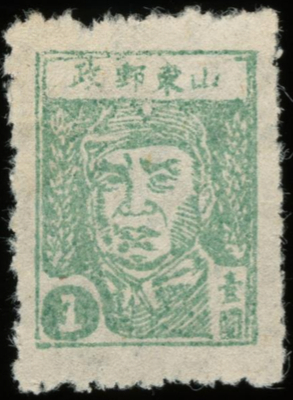
The imperforate edition was also unofficially, privately perforated. Not to be confused with the perforated edition in Song Style.
The stamps have significant shades of color, as can be seen on the following letter (paying 2 元 postage):
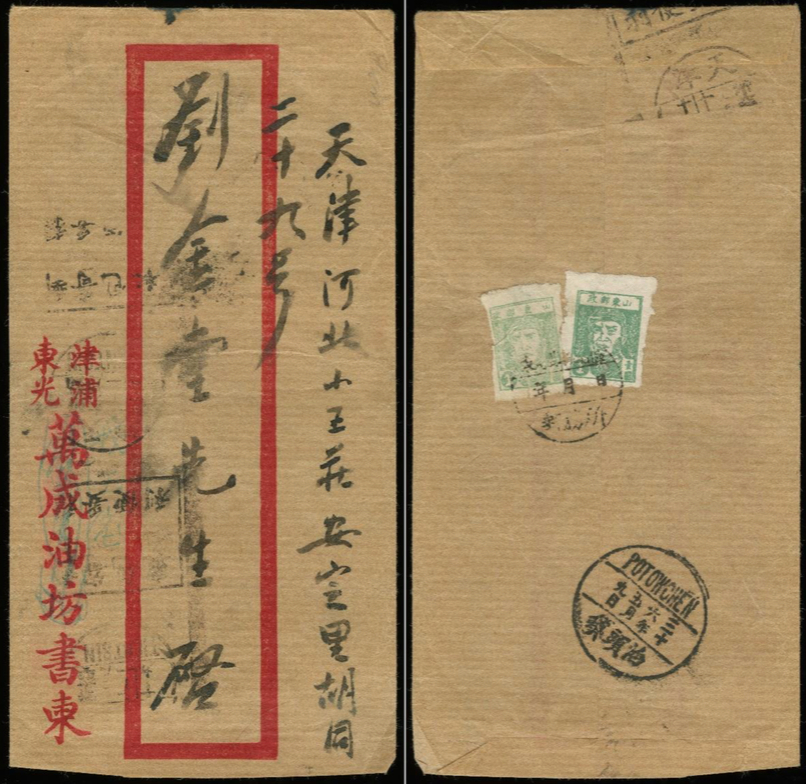
Red band letter from Potowchen (or Pō Tóu Zhèn, 泊頭 鎮), Heibei to Tianjin. Tied by an unusual district post office stamp (郵 務 所) without date. Transit date Potowchen on May 9, 1947, arrival in Tianjin on May 11, 1947, canceled by roller with the advertising slogan: "Postpacket, Safe, Easy" on the front.
The stamp also comes with machine overprint "Temporarily used for 10 元", imperforated or with private perforation.
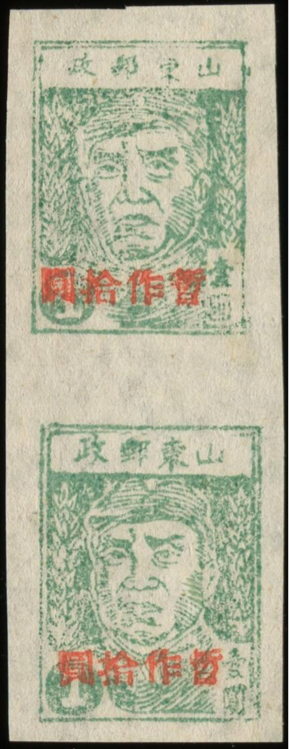
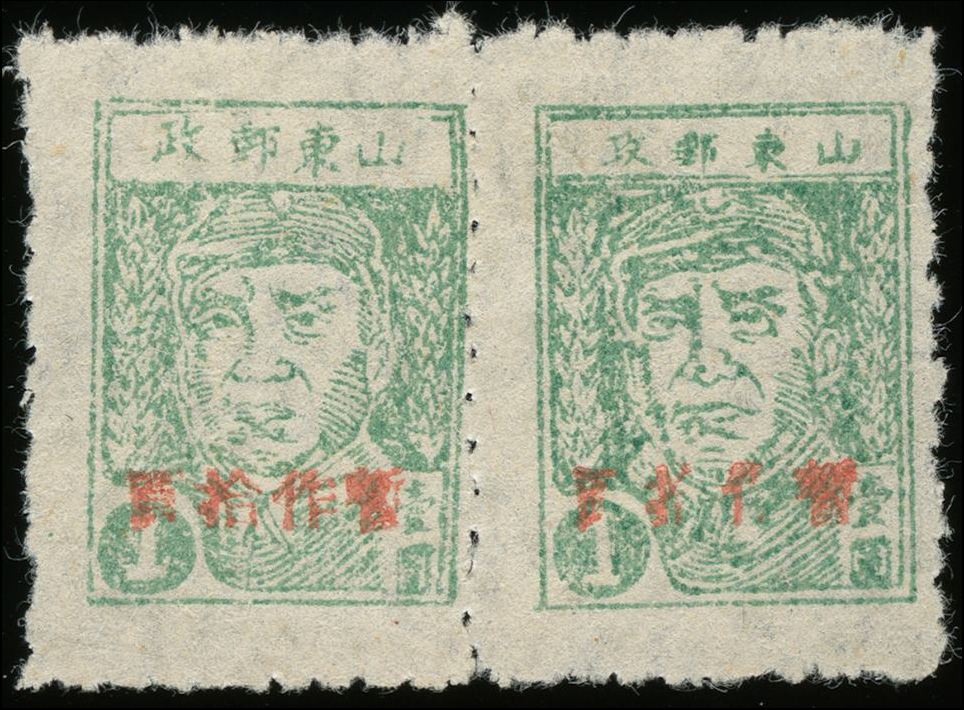
However, the status of the stamp has not been clarified with certainty. Many take the view that this is a "joke edition", sometimes called "Bogus". Again, other philatelists take the stance that the stamp is an officially printed stamp that was withdrawn without being issued.
What is certain is that the stamp was not (genuinely) used.
Unfortunately, I cannot contribute to a final clarification here either. Without being able to prove it, I consider the edition to be a collectible "prank edition" from the early 1950s. Basically, however, the rarity of these overprints translates to greater value. In recent auctions (e.g. ZürichAsia, September 2014, lot. 1517) two of these overprinted stamps, imperforated and privately perforated, achieved realisations of over EUR 800. It remains exciting!
Many of the stamps presented here can also be obtained cheaply for members in the FCP stamp shop (http://www.forge-china.de/marktplatz/).
The original article in German can be accessed in PDF format from the page https://www.forge-china.de/ost-china-befreite-gebiete-liberated-areas-zwischen-in-den-jahren-1942-bis-1949/.
View the full set in the catalogue.
Or see the complete list of articles.